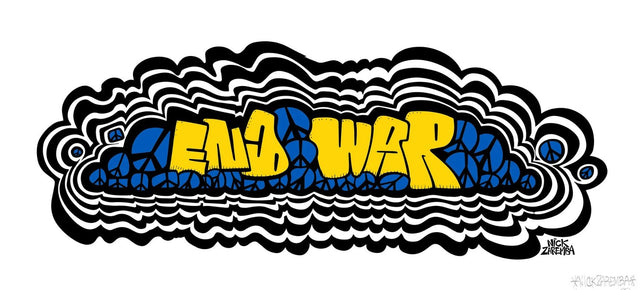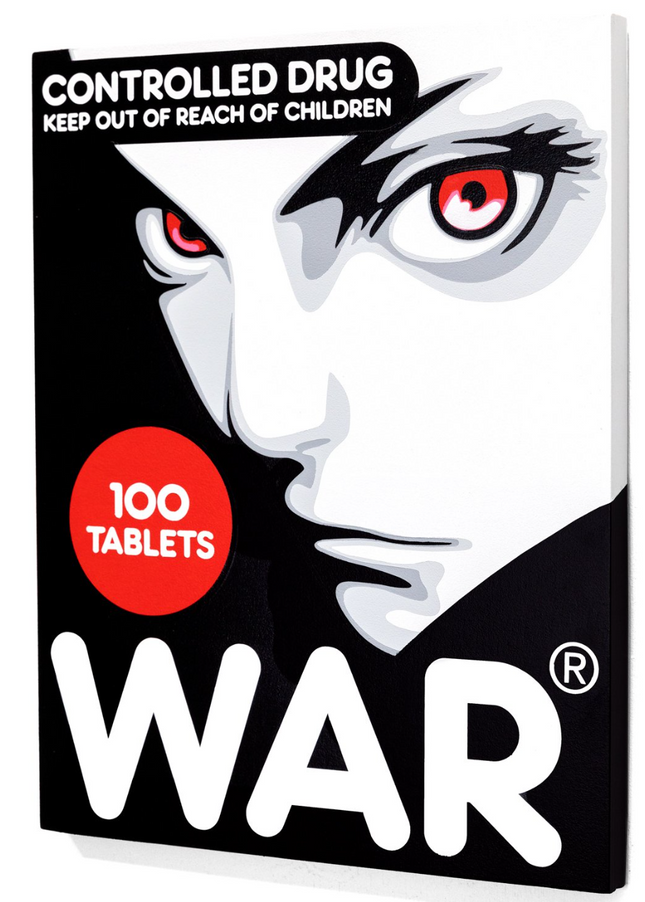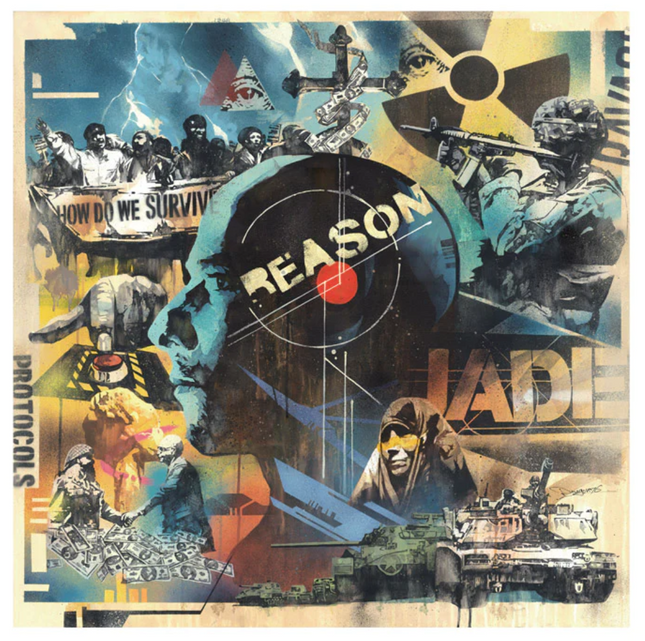War 100 Tablets AP HPM Stencil on Board by Ben Frost Hand-Painted Multiple Panel Graffiti Street Artist Modern Pop Art.
AP Artist Proof 2023 Signed & Marked AP HPM Spray Paint & Acrylic Print Artwork Size 11x14 (Total Run of 10 + 2AP)
Ben Frost's Artistic Commentary
The "War 100 Tablets AP HPM Stencil on Board" by Ben Frost is a provocative piece that epitomizes modern pop art's daring and often subversive nature. Created as a hand-painted multiple (HPM) and a part of a limited edition series, this work reflects the artist's critical eye on societal issues, employing a combination of stencil artistry, spray paint, and acrylic techniques to render his vision on an 11x14 inch board. Frost's piece is bold in its aesthetic and message, immediately capturing attention with the stark contrast of the black and white imagery juxtaposed with the striking red accents. The presence of the word "WAR" in capital letters alongside the words "CONTROLLED DRUG" and "KEEP OUT OF REACH OF CHILDREN" suggests a powerful commentary on the nature of conflict and the pharmaceutical industry's role in society. As an Artist Proof (AP) in 2023, it is marked distinct from the total run of 10 with an additional 2 APs, signifying its rarity and the artist's direct involvement in its creation.
Techniques and Style
Frost is renowned for his street pop art and graffiti artwork, which often utilizes the visual language of advertising and consumerism to explore deeper themes. The "War 100 Tablets" is a clear example of this, as it mimics the look of a medication box, suggesting that war is being 'sold' to the public much like any over-the-counter drug. The stencil technique used by Frost is a hallmark of street art, allowing for sharp, precise lines often associated with mass-produced items, further emphasizing the piece's commentary on commercialism. The artist's use of spray paint and acrylic lends the work a textured, layered look characteristic of graffiti art. This blend of materials and techniques is a deliberate choice by Frost to blur the lines between high art and street art, creating a piece that is accessible yet complex, with a finish that invites closer inspection.
Cultural Impact and Collectibility
Frost's "War 100 Tablets" is a visually striking piece and a collectible item within the art community. The limited number of panels produced, coupled with the hand-painted aspect, ensures that each piece within the series is unique. The AP designation indicates that the artist kept this piece as proof, marking it as an essential part of the edition's history. Collectors and enthusiasts of street pop art and graffiti artwork are often drawn to such pieces for their cultural relevance, investment potential, and as a means of supporting the arts. Frost's wWithical edge and contemporary style appeal to Frost's work to those looking to own art that speaks to the zeitgeist of the current era.
Legacy and Influence
Ben Frost's work, including "War 100 Tablets," contributes to the ongoing dialogue about the intersection of art, commerce, and social issues. By bringing the techniques and styles of street art into a fine art context, he challenges preconceived notions about the value and message of graffiti and street pop art. The artist's signature on the piece is a testament to its authenticity and his reputation in the art world, ensuring that it will remain a significant work for years to come. The "War 100 Tablets AP HPM Stencil on Board" by Ben Frost is a poignant critique of modern society, utilizing the visual strategies of street pop art and graffiti artwork to engage with contemporary issues. Its creation as a hand-painted multiple adds to its exclusivity and allure, marking it as a significant piece within the modern pop art movement and a valuable collector's item. Frost's astute blend of accessible art forms with nuanced social commentary ensures his work remains relevant and thought-provoking, inviting viewers to question and contemplate the world around them.
Read
more
less



